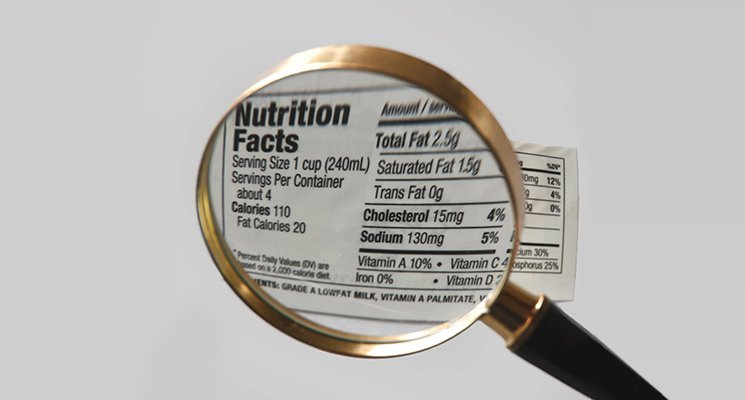You may have heard about a long-term Stanford University study that recently revealed interesting—and controversial—results. Obesity, the study concludes, is due primarily not to over-eating but to a decline in exercise. “Our findings do not support the popular notion that the increase of obesity in the United States can be attributed primarily to sustained increase over time in the average daily caloric intake of Americans,” said the study’s lead author, Uri Ladabaum, an associate professor of medicine at Stanford. “We found significant association between the level of leisure-time physical activity, but not daily caloric intake, and the increases in BMI and waist circumference.”
This is good news for the fitness industry for several reasons. First, amid all the clamoring voices in the media and among experts, it lends a weight of authority to the work we do. Every day, it seems, there’s a new report, or a new top-ten list, or a new “trusted opinion” about the value of exercise, the value of dieting, the value of exercising while dieting, the value of a health club membership. The Stanford study took place over a 20-year period. It rigorously examined obesity, waistline obesity, physical activity, and calorie intake among both men and women. It offers unique data: In 1994, for example, only 19.1 percent of women said they did not have any physical activity in their lifestyle; in 2010, 51.7 percent reported that they did not work out. The difference is similar for men: In 1994, only 11.4 percent of men didn’t work out; in 2010, that figure was up to 43.5 percent. During that time, body mass index increased .37 percent per year for women and .27 percent per year for men.
The upshot is this: Medical scientists who have spent two decades studying the issue have proven that people need to work out to avoid obesity. The opportunities for working out provided by gyms, health clubs, fitness venues, sports centres, and the like are unparalleled. In today’s society, with the pressures of work being what they are and the possibilities for sedentary activity being so attractive and plentiful, it is your facilities that give people a fair shot at lasting good health.
How can you use this information to your benefit? Make it known. Spread news of the study through your social media channels and through personal interaction—make sure your trainers and your sales staff know about it, and get them talking about it. Find ways to ask your members to tell their friends.
Also, create outreach programs. The study shows that the groups hit hardest by lack of exercise are African-American women and Mexican-American women. Consider creating affordable programs and make them available to these groups. Also, try to figure out the best ways to spread the news about them. People who don’t have easy access to exercise want it—and desperately need it—and they represent for you a virtually untapped source of new memberships. It’s up to you to design memberships that work for them.
But beware of one thing: The study results are, as I mentioned, controversial. Certainly eating habits in this country are problematic, especially in places known as food deserts, where nutritious choices are not always available or understood. Even in places where incomes and available options do allow for healthier eating, the prevalence of processed food, fast food, and just plain junk food often leads consumers to make poor choices. To show that you’re concerned with the total health of your members, try to make yourself a source of information about nutrition and healthy dieting. Offer programs to educate your members about healthy eating choices—and to set yourself apart from your competition. Your members are there to work out, and that’s the first step; give them the added bonus of increased chances at better eating. They’ll watch their BMIs drop quicker, and eventually you’ll watch your membership numbers grow.






 Recently, the Centres for Disease Control and Prevention (CDC) released troubling data: Only about a quarter of kids ages 12 to 15 are getting the amount of moderate to vigorous physical activity recommended by federal guidelines: 60 minutes each day. This follows a report the organization issued last year, revealing that childhood obesity has more than doubled in children and tripled in adolescents in the past thirty years. We all know where childhood obesity, or simply too little activity in childhood, can lead: cardiovascular disease, diabetes, bone and joint problems, sleep apnea, poor self-esteem, stroke, cancer, osteoarthritis — nothing good.
Recently, the Centres for Disease Control and Prevention (CDC) released troubling data: Only about a quarter of kids ages 12 to 15 are getting the amount of moderate to vigorous physical activity recommended by federal guidelines: 60 minutes each day. This follows a report the organization issued last year, revealing that childhood obesity has more than doubled in children and tripled in adolescents in the past thirty years. We all know where childhood obesity, or simply too little activity in childhood, can lead: cardiovascular disease, diabetes, bone and joint problems, sleep apnea, poor self-esteem, stroke, cancer, osteoarthritis — nothing good.
 Have you heard about the CEO Pledge? It’s a campaign promoted by the National Coalition for Promoting Physical Activity (NCPPA) to encourage CEOs to recognize physical activity as an important driver of employee health and business performance. In other words, it’s a great opportunity for health clubs to connect with corporate clients.
Have you heard about the CEO Pledge? It’s a campaign promoted by the National Coalition for Promoting Physical Activity (NCPPA) to encourage CEOs to recognize physical activity as an important driver of employee health and business performance. In other words, it’s a great opportunity for health clubs to connect with corporate clients.
 I don’t know Albert, a fifty-two-year-old marketing specialist and father of two, but I know he lost fifty pounds at my gym. How do I know? The gym posted a video on Facebook of him telling his story. Last month there was one of Maria, a stay-at-home mother of three who faced dangerous health conditions because of obesity. She hadn’t yet lost much weight, but she talked about her commitment to doing so. And recently, in a blog on the gym’s website, there was a first-person narrative by a twenty-five-year-old man who was confined to a wheelchair for eight months because of a car accident. When he was finally able to walk again, he realized that he’d gained thirty pounds while wheelchair-bound. Even though using his legs was still difficult and painful, he set a goal of losing a pound a week, and, taking it slowly and steadily, he’d already lost ten.
I don’t know Albert, a fifty-two-year-old marketing specialist and father of two, but I know he lost fifty pounds at my gym. How do I know? The gym posted a video on Facebook of him telling his story. Last month there was one of Maria, a stay-at-home mother of three who faced dangerous health conditions because of obesity. She hadn’t yet lost much weight, but she talked about her commitment to doing so. And recently, in a blog on the gym’s website, there was a first-person narrative by a twenty-five-year-old man who was confined to a wheelchair for eight months because of a car accident. When he was finally able to walk again, he realized that he’d gained thirty pounds while wheelchair-bound. Even though using his legs was still difficult and painful, he set a goal of losing a pound a week, and, taking it slowly and steadily, he’d already lost ten.
 I had a nice little visit to the emergency room the other day. I injured my foot, and I wish I could say I did so while training for a marathon or participating in an Insanity workout or some such thing, but truthfully I was just racing my seven-year-old downhill, and I landed on it awkwardly.
I had a nice little visit to the emergency room the other day. I injured my foot, and I wish I could say I did so while training for a marathon or participating in an Insanity workout or some such thing, but truthfully I was just racing my seven-year-old downhill, and I landed on it awkwardly.
 It’s back-to-school month — and Childhood Obesity Awareness month. Even if your fitness facility caters mostly (or exclusively) to adults, you can contribute to the effort to draw attention to childhood obesity and its devastating consequences.
It’s back-to-school month — and Childhood Obesity Awareness month. Even if your fitness facility caters mostly (or exclusively) to adults, you can contribute to the effort to draw attention to childhood obesity and its devastating consequences.